

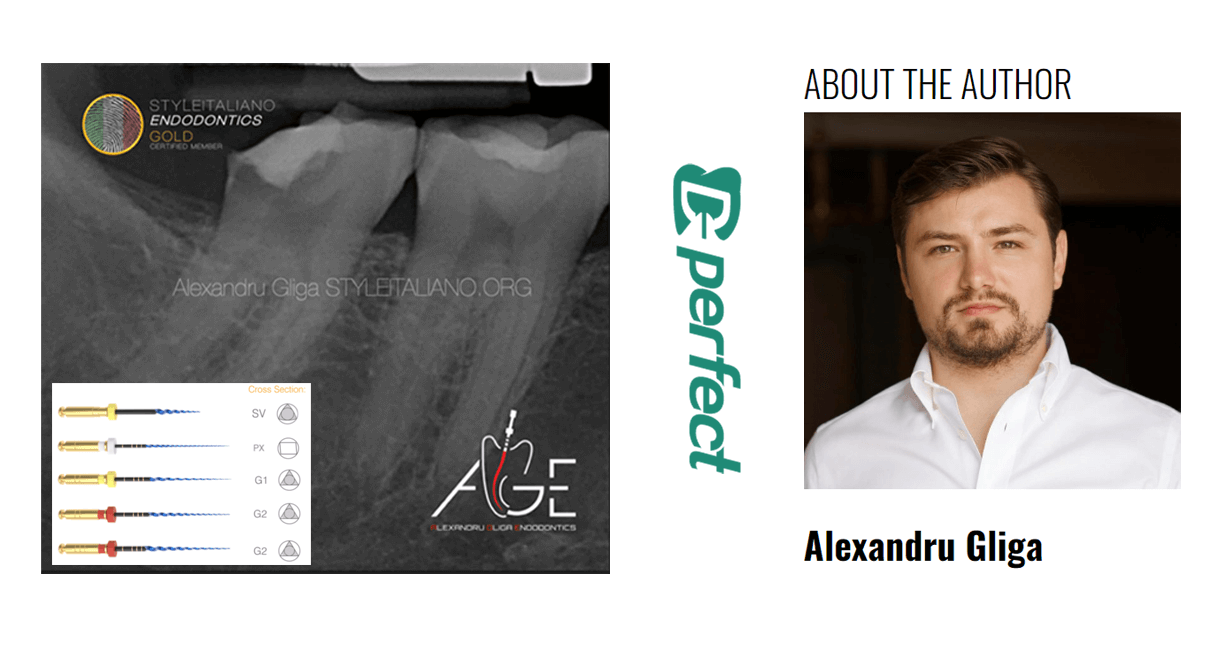
There are difficult situations clinicians cope with when performing a primary root canal treatment. If the patient has limited mouth opening, moreover a deep margine elevation must be managed to restore a distal and a buccal wall, various challenges have to be managed carefully. Placing the rubber dam clamp and identifying the canals in such situation can be surprisingly demanding. Each clinical situation is different and the tools have to be chosen correctly: from a small 3mm endodontic mirror to a flexible file system that ensures a safe mechanical instrumentation of the endodontic system, regardless of the endomotor handpiece positioning.

Fig. 1
Case description:
The 38 years old patient was referred to our office by her general dental practitioner for endodontic treatment. She complained about acute unprovoked pain in the lower right quadrant.
The access cavity was driven by removing the coronal temporary filling material and the infected dentine.
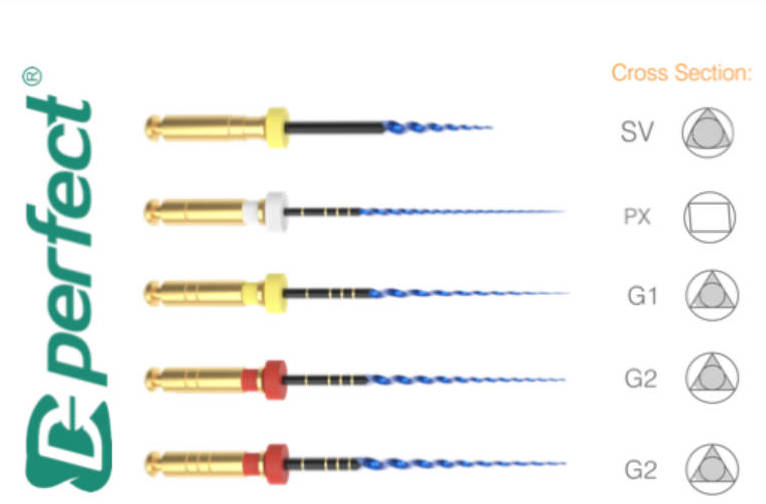
The MG3 Blue file system from Perfect was chosen for managing this case.
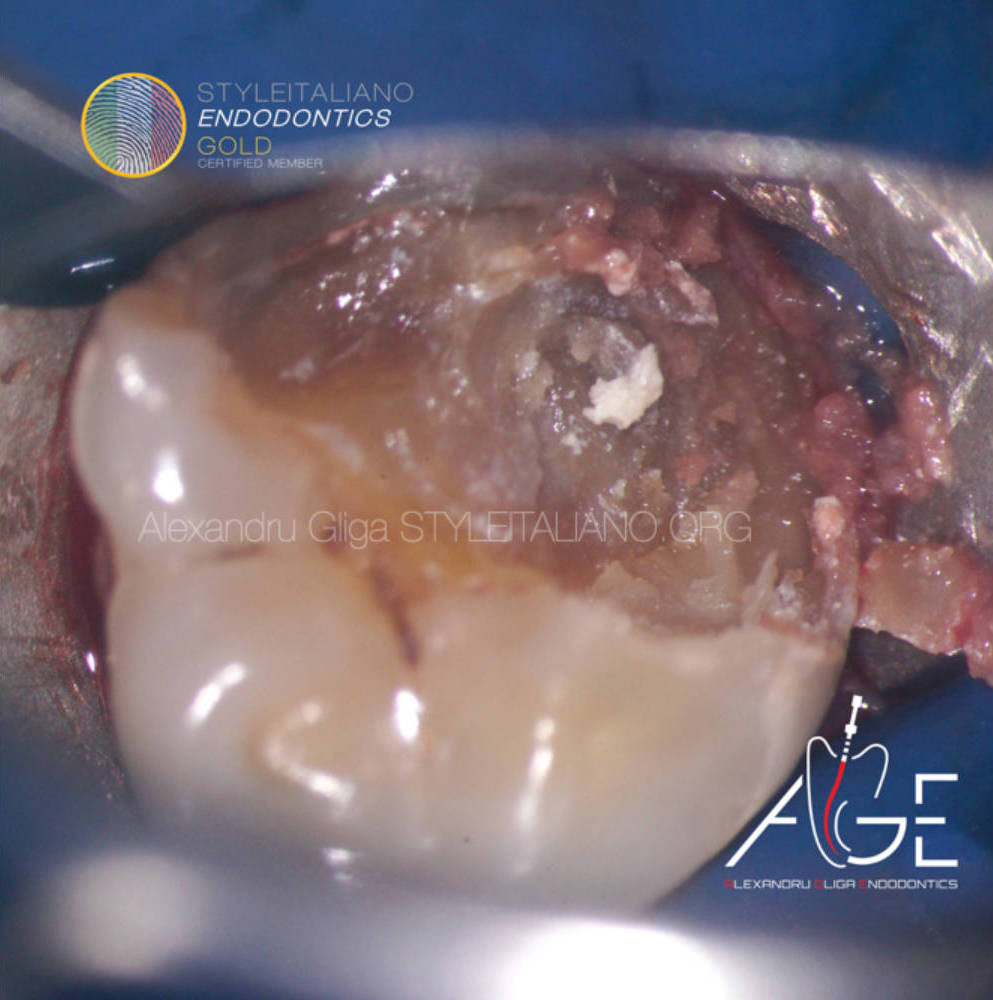
The coronal temporary filling material was removed using a G1 ultrasonic tip
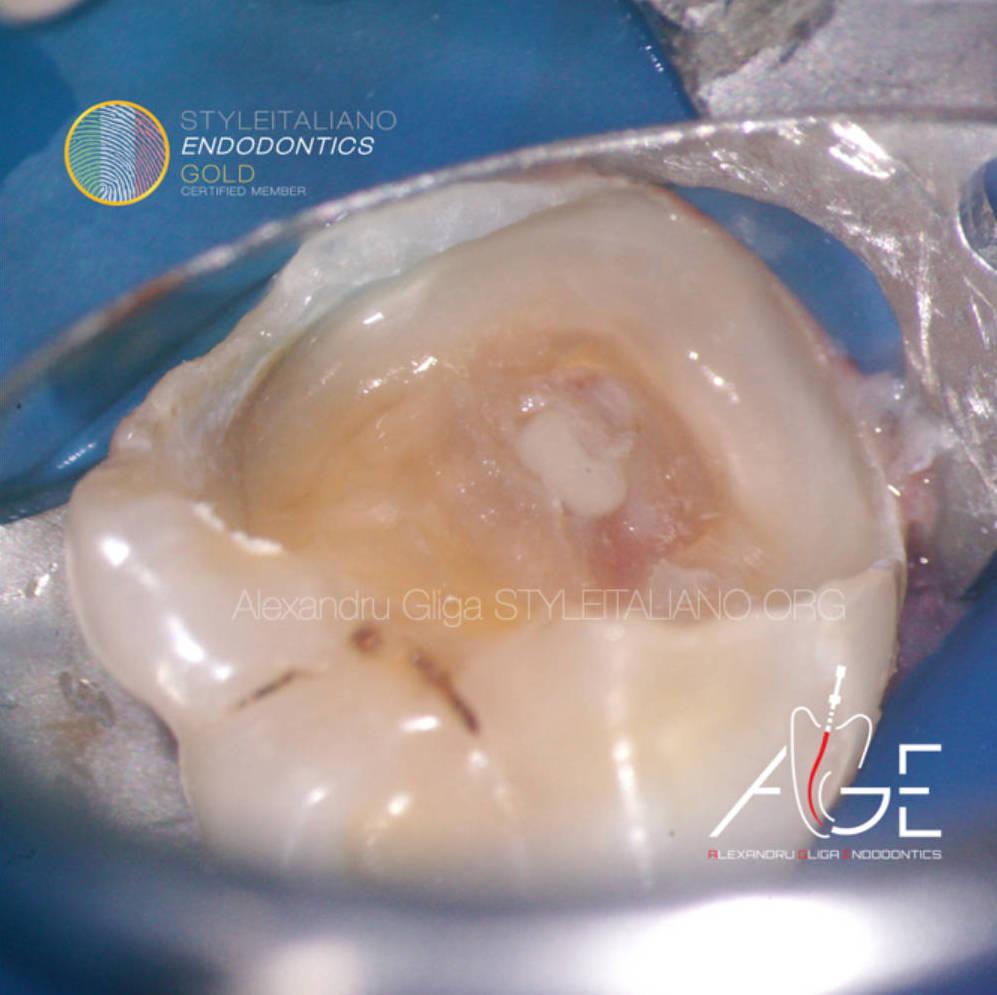
Puss drainage was detected when removing the pulp chamber roof
Endo motor setting
File sequence for shaping the mesial canals
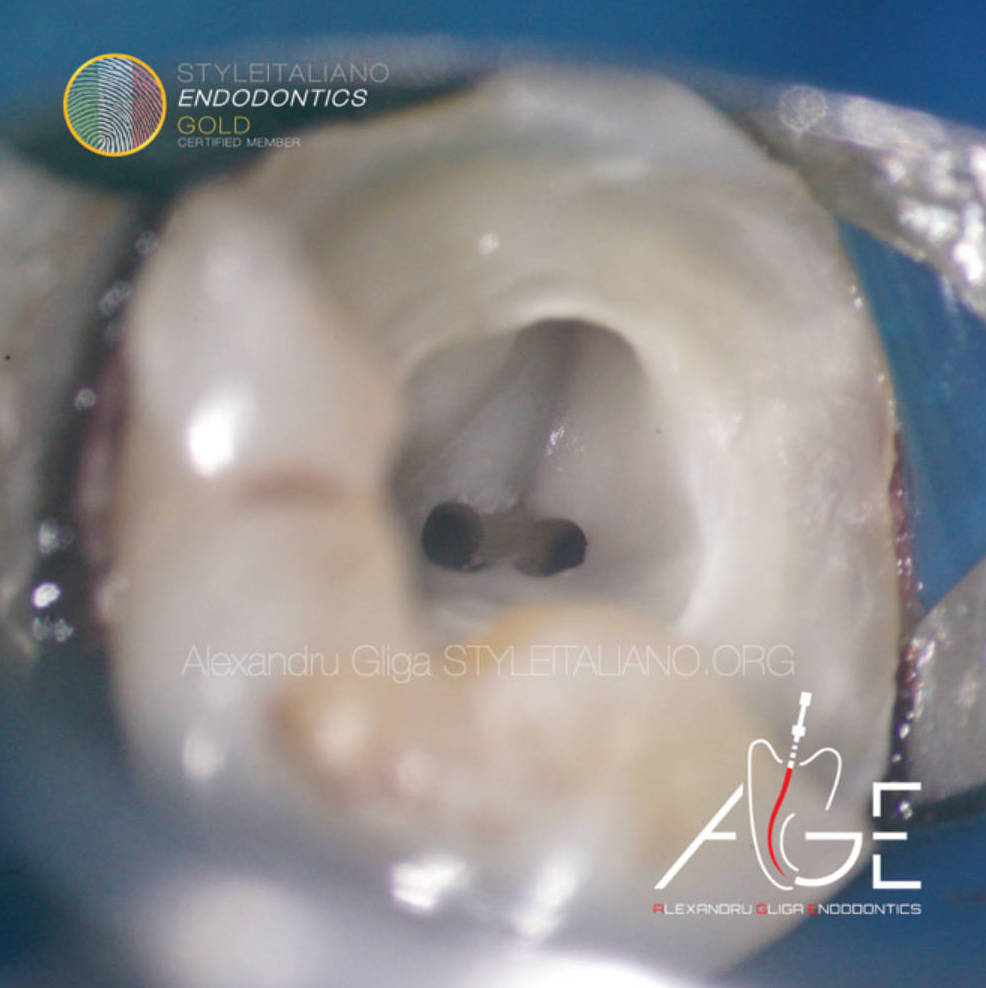
Clinical image after shaping the mesial canals
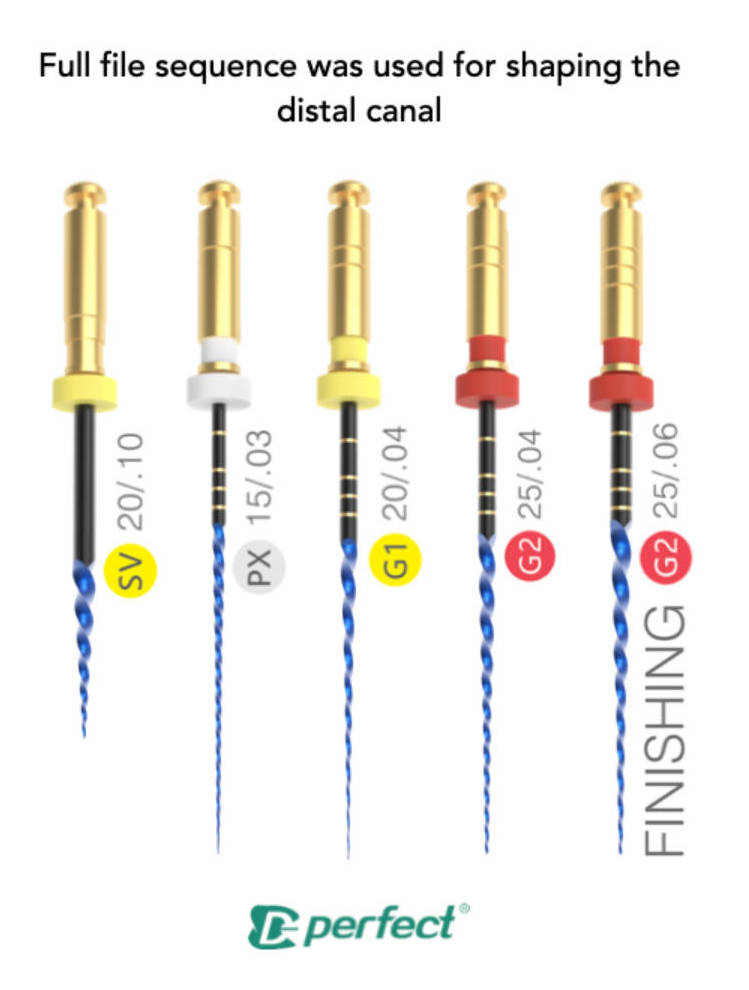
Full file sequence was used for shaping the distal canal
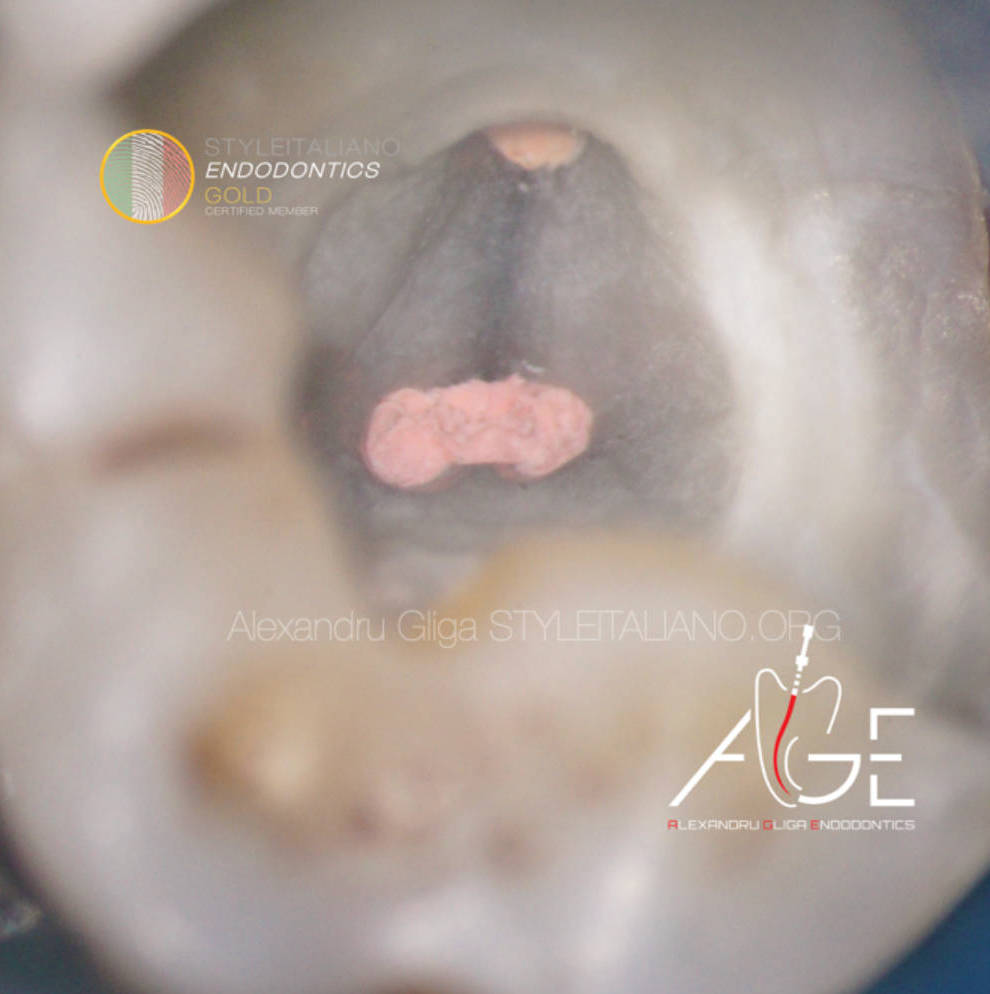
Clinical image after shaping

Vertical warm condensation technique was performed to obturate the mesial canals.
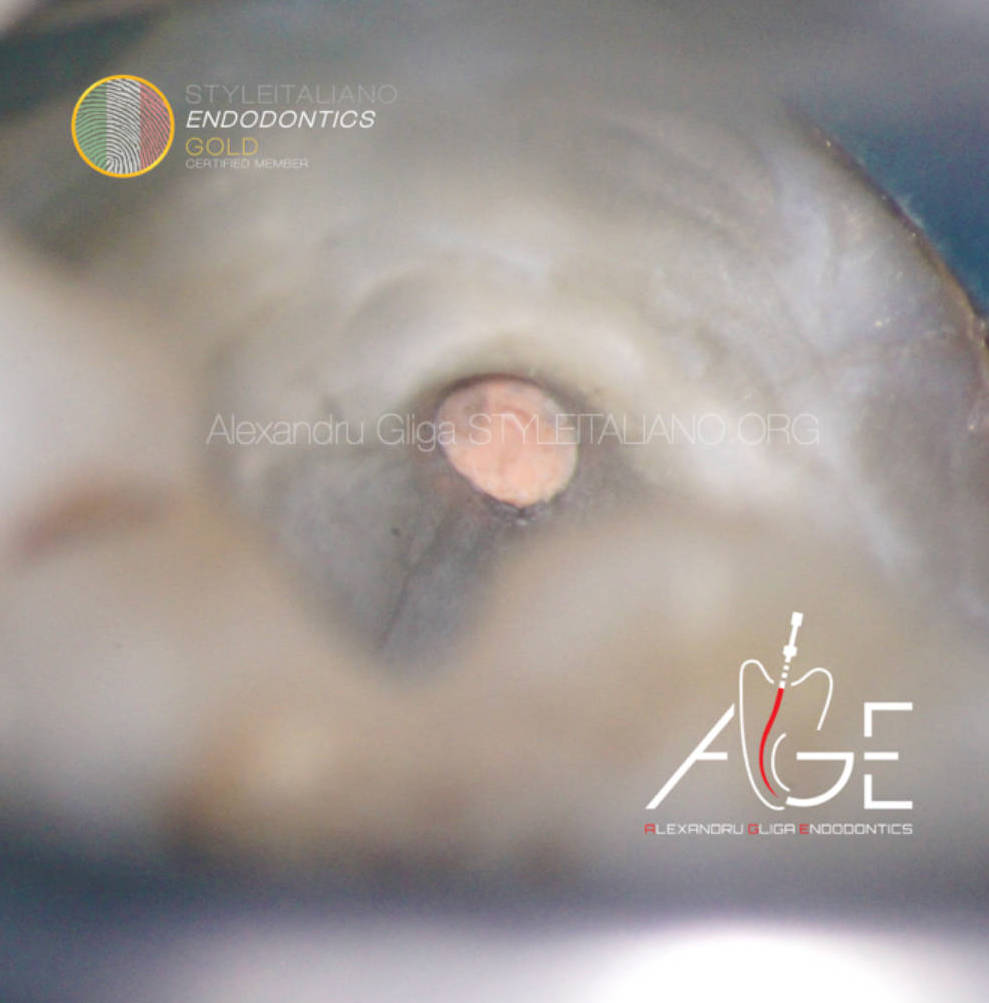
Vertical warm condensation technique was performed to obturate the distal canal.
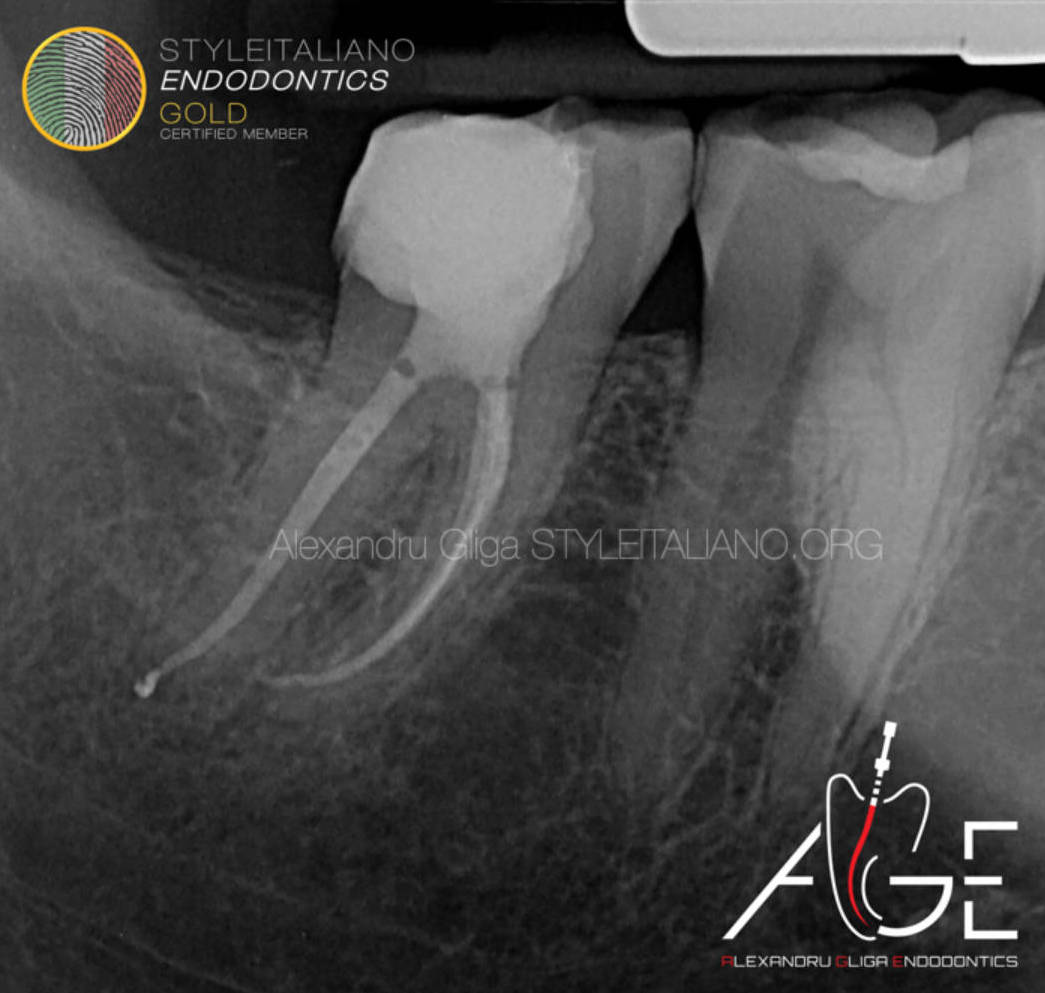
Post operative x-ray
MG3 blue is a versatile and conservative way to shape the root canal system
Whether you are a beginner or an expert, this event will give you the opportunity to learn and progress

Product consultant one-on-one service

Free product solutions

Professional team meticulous answer